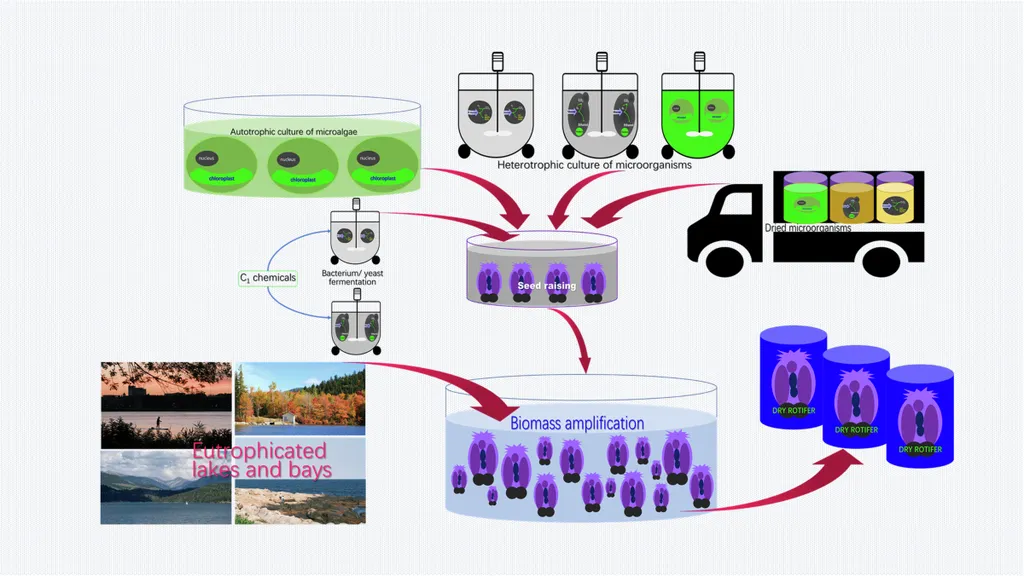In the quest for sustainable animal feed solutions, a team of researchers led by Li Guo from the College of Marine Life Sciences at Ocean University of China has proposed an innovative approach that could revolutionize the aquaculture and livestock industries. Their work, published in the journal *npj Sustainable Agriculture* (which translates to “npj Sustainable Agriculture”), focuses on the domestication of rotifers using natural phytoplankton, offering a promising avenue for both animal feed production and environmental management.
Rotifers, microscopic aquatic animals, have long been recognized for their nutritional value as feed for aquatic larvae and even terrestrial animals. However, the challenge has been scaling up their production efficiently and sustainably. Guo and his team have developed a conceptual system that addresses this challenge by centralizing the initial seed raising of rotifers and decentralizing the subsequent biomass amplification using natural phytoplankton.
“This approach not only simplifies the scaling process but also leverages the abundance of natural phytoplankton found in eutrophic waters, which are waters rich in nutrients but often problematic for the environment,” explains Guo. By utilizing these natural resources, the system can achieve dual benefits: producing high-quality animal feed and contributing to environmental governance by managing eutrophic waters.
The implications for the animal feed industry are significant. Traditional feed sources often rely on finite resources or have a substantial environmental footprint. The proposed system offers a sustainable alternative that could reduce dependency on these resources while simultaneously improving water quality. This could be particularly impactful for the aquaculture sector, which is constantly seeking innovative and eco-friendly feed solutions to support its rapid growth.
Moreover, the decentralized nature of the biomass amplification process means that feed production can be localized, reducing transportation costs and carbon emissions. This could make the solution particularly attractive for regions with abundant eutrophic waters, offering them an opportunity to turn an environmental challenge into an economic advantage.
The research also opens up new avenues for further exploration. As Guo notes, “While our study focuses on rotifers and natural phytoplankton, the principles could be adapted to other species and resources, paving the way for a more diverse and resilient animal feed industry.”
In the broader context, this work underscores the potential of integrating environmental management with agricultural production. As the world grapples with the dual challenges of food security and environmental degradation, such integrated solutions could play a crucial role in shaping a more sustainable future.
The study, titled “Domesticating rotifer as animal feed using natural phytoplankton from eutrophic waters,” was published in *npj Sustainable Agriculture*, a testament to the growing recognition of the need for sustainable practices in agriculture. As the world continues to seek innovative solutions to feed its growing population, this research offers a glimpse into the potential of looking to nature for inspiration and resources.

